Ongoing and Proposed Research Projects
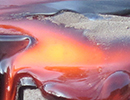
This project is the result of a cross-disciplinary collaboration with Professor Robert Wysocki, a sculptor. By merging our interests and expertise, we have been developed the capability to melt and pour significant volumes of basaltic lava under controlled experimental conditions. Parameters such as composition, temperature, flow rate, vesicularity, crystallinity, slope, etc. are pre-determined or monitored during our experiments. One of the initial goals is to better understand how these parameters interact to produce the range of morphologies found in natural basaltic lava flows. The SU foundry is the only academic institution where real lava is being poured on a scale that approaches that of natural lava flows. While this project started as a way to study the processes and products of lava flows and recreating natural structures, we quickly discovered that people of all ages and backgrounds are fascinated with watching our ‘pours
TECTONIC WINDOWS INTO THE OCEANIC LITHOSPHERE
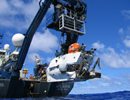
Major tectonic escarpments provide “tectonic windows” into the internal structure of the oceanic crust. These exposures are mapped and sampled with submersibles such as ALVIN and various other seafloor mapping tools including deeply towed side-scan sonar systems and various remotely operated vehicles (ROV’s). The internal structure of the oceanic crust provides evidence of the interplay among magmatic, mechanical, and hydrothermal processes that occur beneath accreting plate boundaries and along transform faults. These studies have demonstrated that spreading processes at spreading centers with different plate separation rates (or magma budgets) function in very different ways and generate very different types of oceanic crust.
INTERNAL STRUCTURE OF FAST-SPREAD OCEANIC CRUST
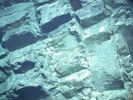
At intermediate to fast spreading rates where the magma supply is robust, seafloor spreading generates a relatively uniform, layered crustal structure that is exposed in tectonic windows. These areas feature “inward-dipping” lava flows and “outward-dipping’ dikes and sheeted dikes over a complex assemblage of gabbroic rocks that crystallized in magma chambers. The overall structure implies that dramatic subaxial subsidence occurs beneath spreading centers and is responsible for the thickening of lava units as well as extensive faulting and rotation of upper crustal units. From this perspective, seafloor spreading resembles a continually collapsing caldera hidden beneath surficial lavas. Structures recording this type of spreading are exposed at the Pito Deep Rift, Hess Deep Rift, Blanco Transform, and ODP Holes 504B, 801C and 1256D.
EXTREME VARIATIONS IN SEAFLOOR SPREADING ON THE MID-ATLANTIC RIDGE
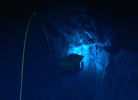
At relatively low rates of plate separation and low magma supply faulting dominates over magmatic construction and major detachment faults and oceanic core complexes form in some settings like near the Kane and Atlantis Transform Faults. Crustal stretching promotes the exposure of upper mantle peridotites and serpentinization that may support low-temperature, off-axis hydrothermal vents like the Lost City Vent Field. In places where the magma supply is somewhat greater, magmatic construction is more important and only moderate crustal stretching occurs. Along the Mid-Atlantic Ridge, extreme variations in geologic structure and spreading processes occur over distances of a few tens of kilometers.
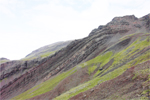
The Mid-Atlantic Ridge spreading center rises to the surface in Iceland providing a remarkable ‘natural laboratory’ for the study of spreading-related processes. In Iceland narrow rift zones and transform faults define the active plate boundary. In the older parts of the island, glaciation has exposed crustal materials that formed at depths of 1-2 km beneath the actively spreading rift zones. Integrating observations from these 2 perspectives reveals the 3D structure of the crust from which spreading processes can be inferred. Icelandic spreading provides an excellent analog for other high-magma supply spreading environments like the East Pacific Rise.
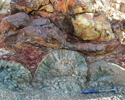
Studies of ophiolite complexes, ancient oceanic lithosphere exposed in mountain belts, reveal the deep structure of oceanic crust and upper mantle produced by seafloor spreading in various tectonic settings. Field structural investigations in ophiolite complexes such as the Bay of Islands Complex (Newfoundland), Bou Azzer (Morocco), and Macquarie Island (Southern Ocean) permit direct access to oceanic crustal and upper mantle rocks. Ophiolites of various ages link spreading processes from active mid-ocean ridges to the early Earth in Archean time.
EXTENSION & MAGMATISM IN RIFTS AND RIFTED MARGINS

In the East African Rift System, detailed structural studies define the geometry and kinematics of active rifting and the birth of a rifted continental margin. Investigations of the ocean-continent transition and coastal dike swarms of the Tertiary East Greenland volcanic rifted margin in collaboration with the Danish Lithosphere Center reveal the earliest stages of seafloor spreading. Together these studies provide a view of the shallow- to deep-level processes that occur during the evolution of magmatic continental rifts.
